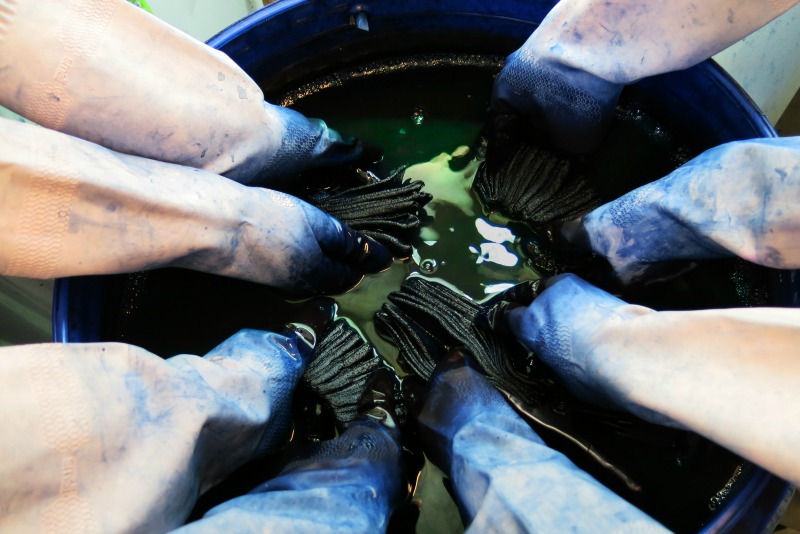"The color indigo, often associated with political power or religious ritual, has held a significant place in many world civilizations for thousands of years. In the excavation of Thebes an indigo garment dating from c. 2500 B.C. was found, for example — furthermore, the Hindu god Krishna is most often depicted in blue,1 human sacrifices were often painted blue in ancient Mayan culture,2 and the Virgin Mary is regularly imagined draped in blue clothes in Christian art." Anne Mattson, University of Minnesota
Indigo from the leguminous plant indigofera was a highly prized trading commodity, often being referred to as "Blue Gold", and it was of far superior quality to the blue dye extracted from the woad plant that was cultivated in Europe. Indigo was imported from countries such as India, China and even as far as the Americas. It was used in ancient civilisations - Egyptian artifacts suggest that indigo was employed as early as 1600 B.C and Mesopotamium writing tablets illustrate dyeing recipes for turning wool blue through immersing and air drying.
By the time the Industrial Revolution arrived, demand for the precious commodity increased to satisfy the burgeoning textile industry. However, as the natural extraction methods were deemed inefficient, the industry turned to chemical extraction and eventually the synthetic version of indigo. This discovery led to the Nobel Prize to Adolf von Baeyer (yes, the famous German chemical firm!). With this development, demand for natural indigo waned, but now with the negative environmental impacts of synthetic dyes, we are seeing a resurging demand for the natural form.
All very interesting, yes?
I was very curious about the process of indigo dye that I took part in a indigo shibori workshop at Mai Textile Studio. Minyi, the owner, shared with us the process of indigo dye and was extremely patient with us! Thank you, Minyi.
Only the plant is natural!
If you're thinking of indigo as being a natural dye, yes it is, but only to some extent. Minyi explained that chemicals are still required to extract the dye and also to maintain the indigo dye vat e.g. lye and soda ash. More importantly, because of the chemicals, the dye in the vat needs to be disposed of properly (ie in the sink that leads to a water treatment plant and not a river!). I think I was more surprised by the stink the vat caused but I got used to it after a while!
Dying takes time
This workshop is not for people who don't appreciate textile arts. Yes, I'm serious, this process requires a lot of patience and if you don't understand this then the indigo shibori workshop isn't for you (sorry to be so blunt). Traditional shibori takes hours (not one or two). In fact, the dyeing process requires standing over a large vat and dipping and drying your piece of fabric at least 8 times. It's backbreaking but definitely worth the effort. Just remember to do some stretching before hand.
Don't peek!
Minyi only takes in 5 students at a time and so we had her full attention. She kept reminding us not to peek and be patient. It reminded me of the time my mum used to remind me to wait until Christmas Day before I could unwrap the Christmas presents. We definitely sounded like excited children when unraveled our pieces. Here we are looking very happy!
Having taken this workshop, my curiosity for colour has just ramped up a few notches, and I don't think I'll look at the blue on my jeans the same way again!
Photos: Courtesy of Mai Textile Studio















Love the Famous Five photo and your beautiful indigo dye patterns. Thank you for sharing Agy. Inspirational.
ReplyDeleteThanks for sharing your experience Agy, this was such an interesting read and WOW just look at the designs you each came away with, fabulous :D - Chris
ReplyDeleteI love those indigo fabrics. I don't think I would want to make it, but the results are beautiful!
ReplyDeleteThose pieces are awesome!
ReplyDelete